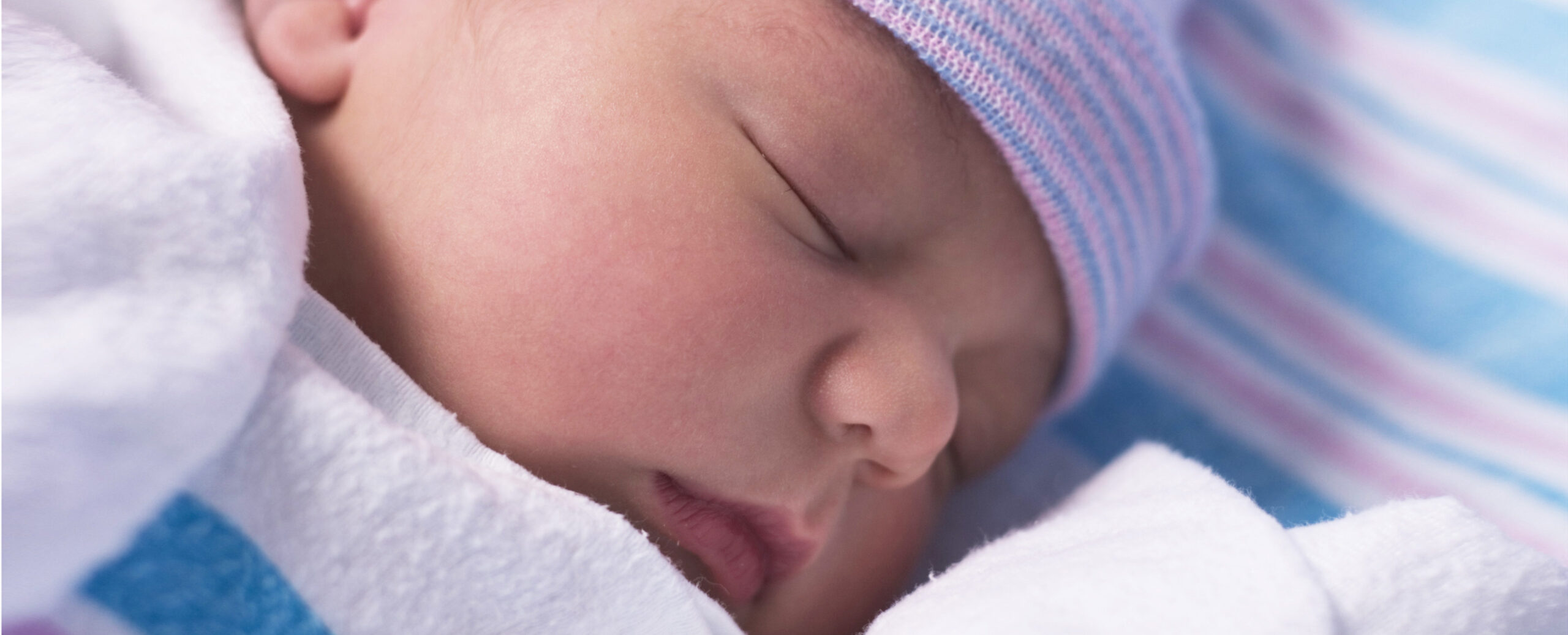Embryo Donation
Embryo donation at a glance
- When a woman or couple goes through in vitro fertilization (IVF), embryos are created with the male partner’s or donor’s sperm and the woman’s or donor’s eggs. One or more of these embryos will be implanted into the woman’s uterus to begin a pregnancy.
- Unused embryos can be cryopreserved (frozen) for later use, or discarded. Some women or couples who have completed their families and no longer need their unused embryos may choose to donate the embryos.
- An infertile couple (due to female infertility, male infertility or both) may consider using donated embryos as a way for the woman to carry a pregnancy and give birth. This also cuts out the cost of creating embryos, meaning the procedure will be less costly than traditional IVF.
- After the arrangements have been made, one or more of the donated embryos are thawed and implanted into the recipient mother’s uterus.
- Although the woman or couple who uses donated embryos will not be related to the child genetically, they will get to have the experience of pregnancy and birth.
What is embryo donation?
During an IVF treatment, several of the female’s eggs are retrieved and fertilized with the male’s sperm to create embryos. The couple or woman who produced the embryos might not use all of them for current or future implantation. They must decide what to do with the extra embryos.
Donating these embryos to another couple/woman who cannot produce viable embryos gives them a chance to achieve pregnancy that might otherwise be impossible.
Embryo donation is a wonderful gift, offering benefits to both the donating and recipient woman/couple. The donating party benefits from knowing that the unused embryos had an opportunity for life, and the recipient party benefits from the opportunity to experience pregnancy and parenthood.
Many couples choose embryo donation for just this reason. Alternately, if they have additional embryos they will not use, such as embryos they had originally frozen for potential future IVF use, they must decide to store them frozen, which can be costly, donate them to research or destroy them. These are controversial options for some patients, making embryo donation a more appealing option.
Embryo donors can be either anonymous or known. Anonymous donors are not identified to the recipient. The two parties, including the resulting child of the donated embryo, will never have contact with each other. Such arrangements are usually agreed to before the donation occurs and may be included in legal documents.
Known embryo donations, also called directed donations, could involve a couple donating an embryo(s) to help a friend or family member experiencing infertility due to inviable embryos. Even in this case, deciding whether or not to tell the resulting child is an issue both parties must address.
Difference between receiving a donated embryo and embryo adoption
Receiving a donated embryo is often thought of as adoption from the earliest possible phase (pregnancy). However, the determination of a legal “adoption” is governed by the laws of each state.
Adoption in Tennessee only relates to a judicial order establishing a parent/child relationship. Since embryos are not yet children, embryo adoption is not allowed in Tennessee. But embryo donation is allowed.
TRM’s embryo donation services
When donated embryos become available, TRM’s staff reviews characteristics of the donated embryos. This includes the health of the embryos and the physical and social traits of the parents that might influence the resulting child, including intellectual development and interests.
Steps for receiving donated embryos
Schedule an appointment
The first step is to become an established patient with TRM by scheduling an in-office consultation with one of our physicians. The consultation will involve obtaining a medical history on patients and a recommendation for the appropriate treatment plan. Patients will also complete diagnostic testing during the initial consultation.
Patients will discuss with the physician their desires of specific embryo qualities (race, gender if preimplantation genetic screening was performed, biological parents’ hair color, height, etc.). TRM’s physicians will review patient’s medical records for appropriate embryo matching.
Embryo donation can have emotional issues for recipients and donors, both male and female. Many people have complex feelings and values regarding parenting and genetic relationships, and TRM physicians or counselors address these issues beforehand with both embryo donors and recipients.
Embryo donation waiting list
Once patients have had their initial consultation with TRM, those desiring to continue the process will be placed on the waiting list. The waiting list will vary from week to week, depending on the number of donated embryos at various times. The length of time in which a patient would wait for an available embryo is uncertain, due to a number of reasons. Here are the factors influencing the wait time for an available embryo:
- The number of patients on the waiting list
- Availability of embryos with the specific desired criteria
- Specific guidelines the biological parents may place on a donation such as certain mileage radius outside Chattanooga, etc.
Once embryos are available, patients on the waiting list will be contacted in order as well as based on the criteria of the desired embryo qualities. It is important to become an established patient with TRM first, in order to be placed on the waiting list for future donations. Embryo donations are for TRM’s established patients and embryos will not be shipped to another facility.
Embryo donation process
Embryo donation cycles are $5,835 for the treatment cycle services, excluding diagnostic testing services.
Choosing the embryos
The recipient mother or couple will choose an embryo donor – either known or anonymous – based on a number of factors that may include physical characteristics, ethnicity, family history, age, reproductive history or other factors.
Medical considerations
The intended mother must be evaluated to make sure her uterus is able to carry a pregnancy, as well as for other health concerns that could affect pregnancy. The intended mother will also be tested to ensure that her body will respond to the medications necessary to prepare her for pregnancy. These are similar to the medications used during the frozen embryo transfer and egg donation process.
It is also recommended that both the donating and recipient parties undergo counseling for mental health and other emotional considerations.
Legal considerations
Both the couple who is donating the embryo(s) and the parents receiving the embryo(s) must sign legal paperwork stating intent and clarifying that the intended parents will be the guardians of the resulting child(ren). The intended parents may also request a detailed family history from the couple donating the embryo(s). The couple donating the embryo(s) may also specify what happens to any unused donated embryo(s) if the recipient parents do not use them all.
It is important to involve knowledgeable legal counsel during this process.
Frozen embryo transfer (FET)
Once the embryos have been donated, the woman can begin a frozen embryo transfer in a similar process to IVF. The recipient mother will begin taking medications to prepare her uterus for pregnancy. If she has a regular period, the transfer will take place about three weeks after the start of her period. If she does not have a regular menstrual cycle, the doctor will initiate a cycle to prepare for embryo transfer.
Roughly two weeks after the embryo has been implanted, a blood test can determine if the woman is pregnant. If the transfer was a success, the woman will continue taking medications for up to five weeks to maintain the pregnancy, which will be monitored through blood tests and ultrasounds. Once the new pregnancy has been confirmed and monitored, the woman can then transfer her care to her OB/GYN.
If a frozen embryo transfer does not succeed (does not result in pregnancy), the woman or couple can try again with any remaining donated embryos. Following a successful pregnancy, the remaining donated embryos may also be used in subsequent transfers if the couple desires more children.
Benefits of embryo donation
- Compared to traditional adoption, embryo donation has the benefit of allowing the recipient individual or couple to experience pregnancy and control the pregnancy environment.
- Compared to other methods of third party reproduction, such as egg donation and surrogacy, embryo donation is generally much more affordable. Treatment costs are similar to the cost of a frozen embryo transfer cycle.
- Embryos are not purchased, they are donated; therefore the only costs involved are those of treatment and administrative costs to conduct the cycle.
Risks of embryo donation
Embryo donation involves the transfer of another person’s tissue, presenting a theoretical risk of contracting an infectious disease. To date, however, no documented infectious diseases have been transmitted by way of embryo donation.
Other risks of embryo donation include:
-
- Embryos may not be viable
- For all IVF procedures, including those using donated embryos, the risk of ectopic (tubal) pregnancy is 2-4 percent.
- Multiple pregnancy (twins, triplets, or quadruplets) may result in premature labor, increased incidence of birth defects, diabetes during pregnancy, and/or increased blood pressure during pregnancy.
If you are interested in donating embryos or receiving donated embryos, please contact TRM to schedule a consultation with a physician.


